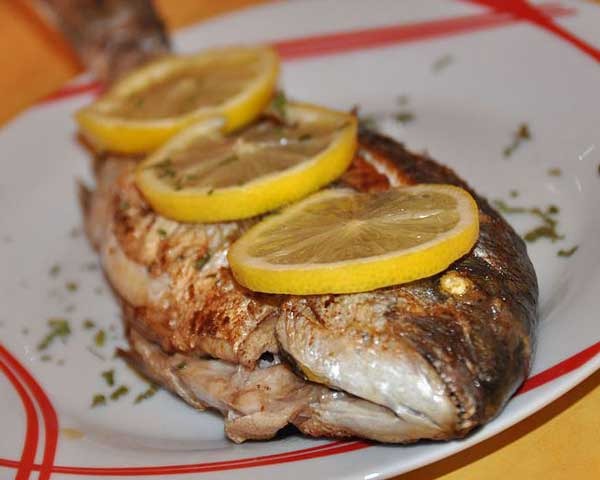Is Nose-To-Tail Fish Dining The Next Big Trend?
A new London restaurant, Yashin Ocean House — sibling of the popular sushi place called simply Yashin — is specializing in nose-to-tail (nose-to-caudal-fin?) and dry-aged fish cookery. The very chic, contemporary-style interior, in a brick building on the Old Brompton Road that many years ago was occupied by a popular pioneering New British place called The Ark, suggests that the restaurant might be a Nobu-style Japanese fusion eatery, and indeed the proprietors are Nobu veterans, but the menu goes in new directions, at least for the U.K.
There is certainly conventional fish, both cooked and in sashimi form (there is no sushi here), but the house specialties are such offerings as fish bone consommé; deep-fried mackerel skeleton with fried vegetable chips; cod roe on squid ink toast; and tuna cheeks with salsify and oyster mushrooms. In addition, whole fish that can be seen hanging like hams from a rack on the open kitchen wall end up dry-aged and served in such preparations as torch-seared sea bream with sauce vierge and miso risotto. Another London eatery, Moshi Moshi, serves monkfish liver terrine and Loch Duart salmon skin and spring onion maki.
Habitués of top-quality sushi bars in the U.S. have probably already encountered fried fish bones and eat-it-all unshelled fried shrimp heads, as well as cod or monkfish roe and even shirako, which is cod sperm. What's new in the U.K. is the expansion of the idea into Asian-fusion and even purely Occidental kitchens. There's fried fish skin crackers and crispy fish skin with roe cream on the menu at London's very English Restaurant Story. Even Michel Roux Jr., of the famous Roux dynasty of English-based French restaurateurs, was quoted recently by The Guardian as saying that he enjoyed cod liver and also cod tongue and throat. "Fish offal is consumed readily in France," he said.
The Guardian also cites Seahorse restaurant in Dartmouth, where chef Mitch Tonks pan-fries monkfish liver with shrimp or serves it cold with chiles and bell peppers; and Yum Yum Ninja in Brighton, where fish-head soup is a regular menu item and the kitchen dehydrates and powders scallop frills for seasoning. And it reveals that Hugh Fearnley-Whittingstall, of River Cottage in Netherbury, Dorset, makes pâtés with herring and cod roe.
According to some estimates, as much as 50 percent of the weight of all fish landed commercially is discarded as junk — skeletons, roe, livers, and sperm sacs included. If piscatorial nose-to-tail eating continues to grow in Britain and catches on in America, maybe we can get that percentage down a bit.
